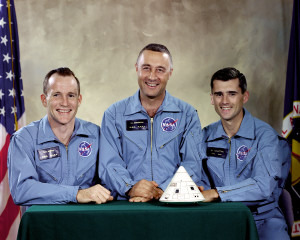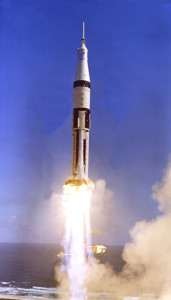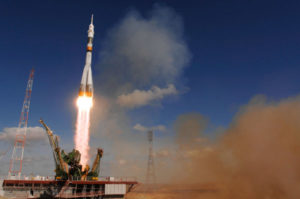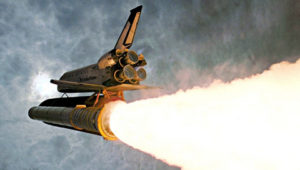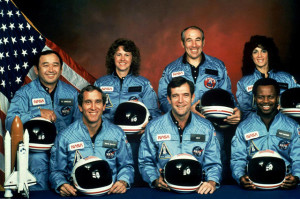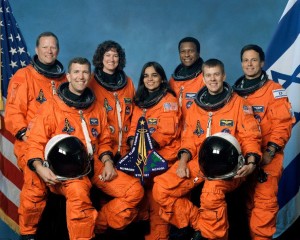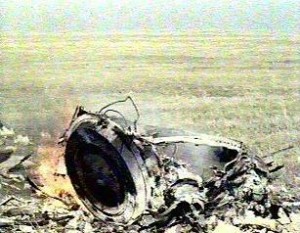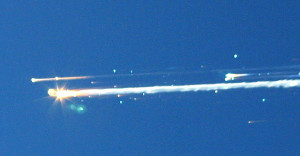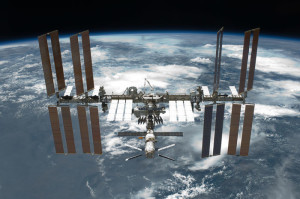The masses often seem to wonder why we still send humans into space. Some of these people think that no one goes into space anymore, or that NASA stopped existing when the shuttle program was closed in 2011. While this lack of education on space travel is horrific to me, that’s not the point of the article here. The point is the reason we go into orbit. Why, right this second, are there 6 people orbiting on the International Space Station, traveling the globe every 90 minutes. Why is the tiny fraction of the funding the United States government giving to NASA being spent heavily on the SLS rocket system, and the Orion Spacecraft, destined to take us back to the Moon and beyond?
Gus Grissom said it best in his famous quote-
“If we die we want people to accept it. We are in a risky business, and we hope that if anything happens to us, it will not delay the program. The conquest of space is worth the risk of life. Our God-given curiosity will force us to go there ourselves because in the final analysis, only man can fully evaluate the moon in terms understandable to other men. “
These words, of course, coming from one of the three men who would die in the Apollo 1 fire on January 27th, 1967. 48 years ago today, as I write these words.
This is always an odd week for me. My birthday falls on the 31st, but more historically, all three of the major United States space disasters fall within this week long period – Apollo 1 on January 27th, Challenger on January 28th, and Columbia on Feburary 1st.
Instead of devoting this post to a particular event, the question of why we even send people came to mind. Indeed, it can be cheaper to send a probe to any given place, and to conduct scientific research with machines, but what can be learned from that? There are so many things only a human can do, and as Grissom phrased it, only a human can describe something in human terms. The feel of walking on the moon, the particular growing pattern of plants in microgravity, the glow of the galaxy from 300 miles up.
It’s human curiosity that makes us want to explore, but the science, and the technology, is why we keep going. You can build machines to do any number of things, but the machine can only do just that – what it is built for. A human can react to a problem in a unique way that a machine simply cannot do. The cost is greater for a manned craft, but the knowledge gained in experience, the human factor, simply cannot be obtained via any other method.
Dangers come with this, though, as rockets, the only way currently to gain the velocities needed to reach orbit and beyond, are basically controlled explosions. Sadly, the power of a failed launch with a crew was shown on STS-51L…. the 10th and final flight of Challenger. The crew died because NASA had begun to treat shuttle launches as routine as airliner flights. Safety was sacrificed on an already risky vehicle, since the Space Shuttle, as beautiful a machine as it was, had no abort capability during the first 2 minutes of flight. No way to get to safety. No chance. Every launch system before, and since, has had some kind of abort capability, but the unique design of the shuttle meant that if the main fuel tank exploded, the shuttle itself would be annihilated.
Sadly, this same design element, the orbiter being on the side of the launch vehicle rather than on the top, with an escape tower as other systems had, would result in the Columbia disaster in 2003, when a piece of foam from the external fuel tank damaged the heat resistant tiles on the left wing of the orbiter, causing it to disintegrate during the intense heat of re-entry into Earths atmosphere. This was a critical flaw in the shuttle design which, sadly, proved to be the beginning of the end for the program. The last two dozen or so shuttle missions, save for one last Hubble Space Telescope servicing flight, were dedicated to finishing the assembly of the International Space Station, something that since its inception in the 1970’s and 80’s was what the shuttle was built for.
Today, Russian Soyuz vehicles, a design which stems back to the mid 1960’s and the failed Soviet Moonshot, are the current way new crews are sent to the ISS. Even Soyuz has had it’s share of failures, with the catastrophic end of the first flight, Soyuz 1, in 1967, and the tragic air pressure loss of Soyuz 11 in 1971, resulting in the death of the crew of the worlds first space station being dark moments in what has since then been a nearly flawless flight record. Several booster failures have resulted in the safe use of the launch escape system, saving the crew from the failure of the Soyuz booster.
There could still be failures, and inevitably we will run into another disaster. That cold morning following my 18th birthday in 2003, I never thought I would see a Shuttle disintegrate. I never dreamed, and certainly never wanted to see any failure in space travel in my lifetime. It is an inevitable event, though. As Grissom said, eventually the law of averages catches up. There will never be a shortage of people willing to risk everything for a chance to leave Earth. I know I myself would not hesitate to take a flight. Eventually, humanity will travel the cosmos in the same way we do the oceans and skies today, without a care in the world. Mistakes can and will happen and lives will be lost, as with any venture we take, but the rewards to the human race will always be worth the risk.
The consumer technology we enjoy today has its roots in the space race of years gone by. The need to miniaturize and advance communications and computer technology has had as much of a boost from the space program as it has military drive, and many of the communications systems in place use satellites as relays for the signals being used. Of course, these satellites don’t need humans operating them, but the technology to allow humans walking on the moon to talk with us, here on Earth, was the predecessor to the relays inside of the satellites you might be using just to read this very article.
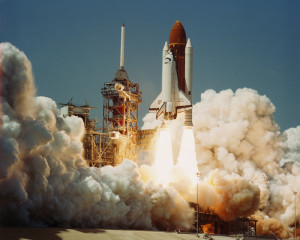
Challenger lifts off on its first flight, during a time when space flight was being seen as routine as airline travel.
Lastly, though, we come to the study of how the human body itself handles being in space for extended periods. The future of the human race is in the stars. We need to know how our bodies will react to extended missions to other worlds like Mars or Venus. We need to know if we can survive trips to even further locations, like the moons of Jupiter and Saturn, and, depending on the evolution of space travel in the future, possibly beyond our own solar system.
For everything the human race has to gain, I will always believe the science and exploration being done in space will be worth the risk of life.

